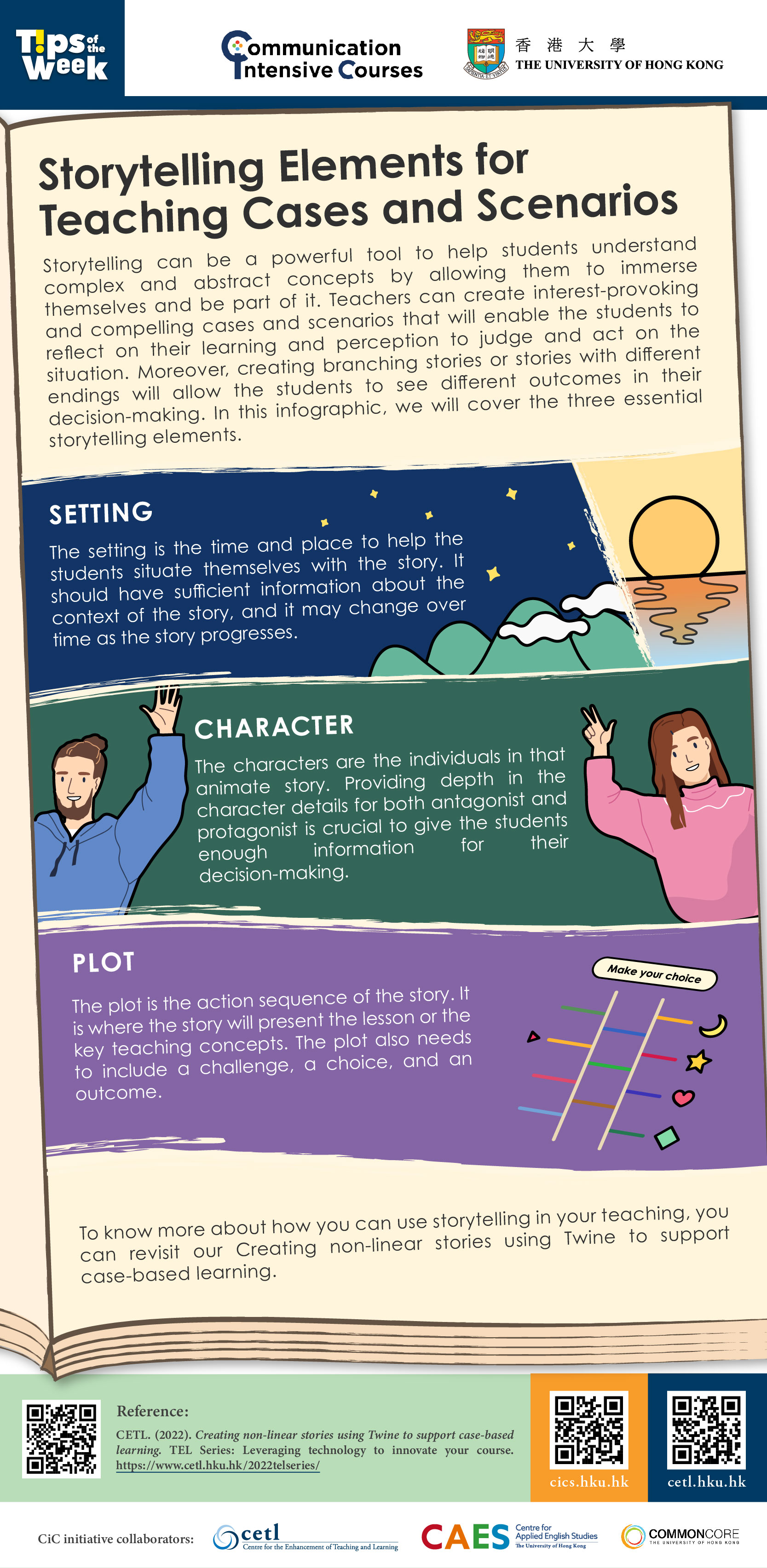
Storytelling can be a powerful tool to help students understand complex and abstract concepts by allowing them to immerse themselves and be part of it. Teachers can create interest-provoking and compelling cases and scenarios that will enable the students to reflect on their learning and perception to judge and act on the situation. Moreover, creating branching stories or stories with different endings will allow the students to see different outcomes in their decision-making. In this infographic, we will cover the three essential storytelling elements.
- Setting
The setting is the time and place to help the students situate themselves with the story. It should have sufficient information about the context of the story, and it may change over time as the story progresses. - Character
The characters are the individuals in that animate story. Providing depth in the character details for both antagonist and protagonist is crucial to give the students enough information for their decision-making. - Plot
The plot is the action sequence of the story. It is where the story will present the lesson or the key teaching concepts. The plot also needs to include a challenge, a choice, and an outcome.
To know more about how you can use storytelling in your teaching, you can revisit our Creating non-linear stories using Twine to support case-based learning.
References:
- CETL. (2022). Creating non-linear stories using Twine to support case-based learning. TEL Series: Leveraging technology to innovate your course.
https://talic.hku.hk/2022telseries/



